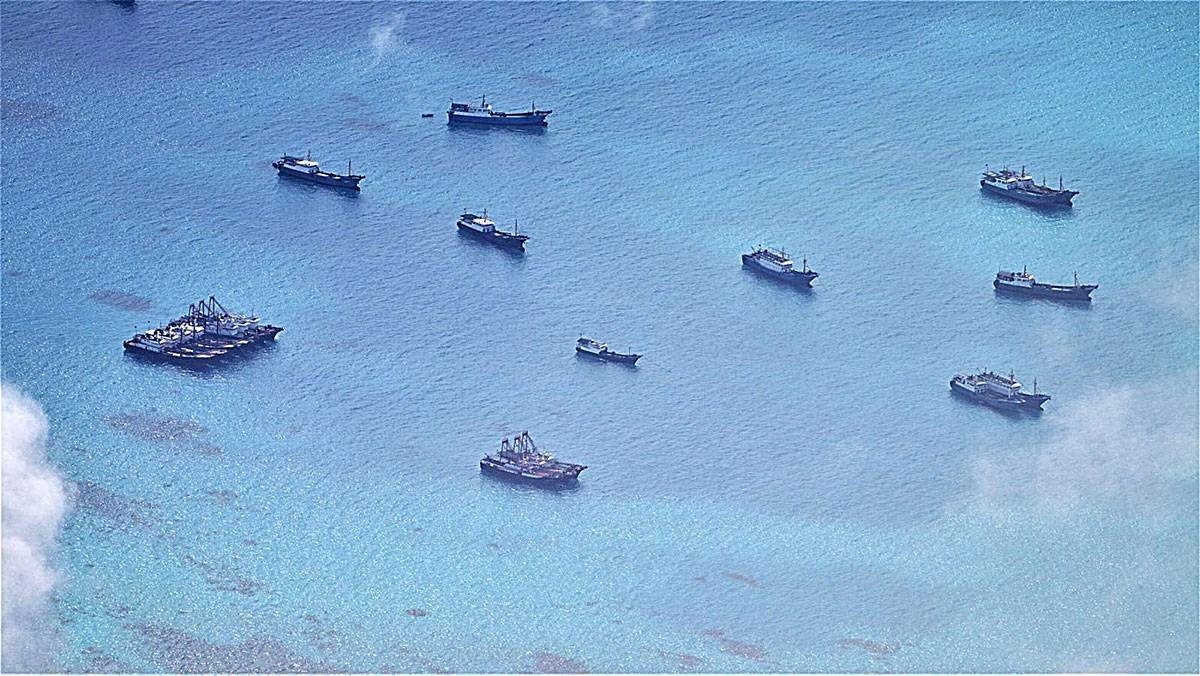A SWARM of Chinese ships have ventured inside the Ayungin (Second Thomas) Shoal in what a maritime security expert described as an “unprecedented” event. This development has raised concerns and sparked discussions about the intentions and implications of China’s actions in the disputed waters of the South China Sea.
Ray Powell, director of SeaLight and Project Lead for Project Myoushu at Stanford University’s Gordian Knot Center for National Security Innovation, noted that the Chinese blockading force typically returns to their base in Panganiban (Mischief) Reef once the Philippine supply boats and their escorts complete their mission to deliver provisions to the troops stationed in the derelict Navy ship Sierra Madre.
However, recent satellite imagery has shown an extraordinary number of 11 Chinese vessels inside the shoal and 27 other ships surrounding Ayungin, including vessels involved in Sunday’s incident. This highly unusual invasion of the shoal’s interior appears to have been a calculated show of force by Beijing.
Furthermore, Powell observed that none of the ships had their broadcasting automatic information system (AIS) on, indicating a deliberate attempt to conceal their presence and intentions. He added that the Chinese vessels remained around the shoal until Monday afternoon, with some even venturing inside. This level of Chinese incursion is unprecedented and has raised concerns among regional stakeholders.
Additionally, 27 Chinese militia ships and the China Coast Guard (CCG) vessel 5402, which was involved in several confrontations with Philippine vessels, were detected through AIS around the shoal. More ships were located outside the shoal, including CCG 21556, the ship that fired its water cannon at and collided with the Unaiza May 1, the supply boat carrying Armed Forces of the Philippines Chief of Staff Gen. Romeo Brawner and Western Command’s Commander Vice Admiral Alberto Carlos on Sunday.
These incidents, along with reckless and dangerous maneuvers by CCG and Chinese Maritime Militia (CMM) vessels, have raised concerns about the escalation of tensions in the region. Japan has also expressed serious concern over actions that increase regional tensions and reiterated its commitment to protecting free, open, and peaceful seas.
In a joint statement last February, Tokyo concurred with Manila’s objections to unlawful maritime claims, militarization, coercive activities, and the threat or use of force in the South China Sea. Japan opposes any unilateral attempts to change the status quo by force and any actions that increase tensions in the region.
The Philippines, on the other hand, has consistently complied with the 2016 Arbitral Tribunal award, which invalidated China’s claim on the strategic waterway that encroached on the Philippines’ exclusive economic zone (EEZ). The country has shown its commitment to the peaceful settlement of disputes in the disputed waters.
The recent Chinese incursion into Ayungin Shoal has raised concerns about China’s intentions and its impact on regional stability. The international community continues to monitor the situation closely, emphasizing the importance of upholding international law and promoting peaceful resolutions to maritime disputes.







